Today we bring you the Church of Conceição Velha, one of the most curious churches of Downtown Lisbon. It is located in Rua da Alfândega, next to Praça do Comércio and its history has several particularities.
The most evident one is the fact that the building still displays an old gate from the 16th century that survived the earthquake of 1755 and that clearly differs from the discreet façades of the Pombaline Downtown.
The second particularity is that its story is associated to singular feminine figures.
Since its edification in the beginning of the 16th century to its reconstruction in the late 18th century, that names of women were associated to this church of evocation of another woman, the Virgin Mary. And here are several faces of the Virgin represented in magnificent pieces of art from different times.
Let us then tell you the story of the Church of Conceição Velha through the remarkable women who are linked to it.
Get to know Lisbon’s historic neighbourhoods in a guided tour and discover unmissable places of this magnificent city.
Queen Leonor and the Foundation of the Misericórdia Institutions
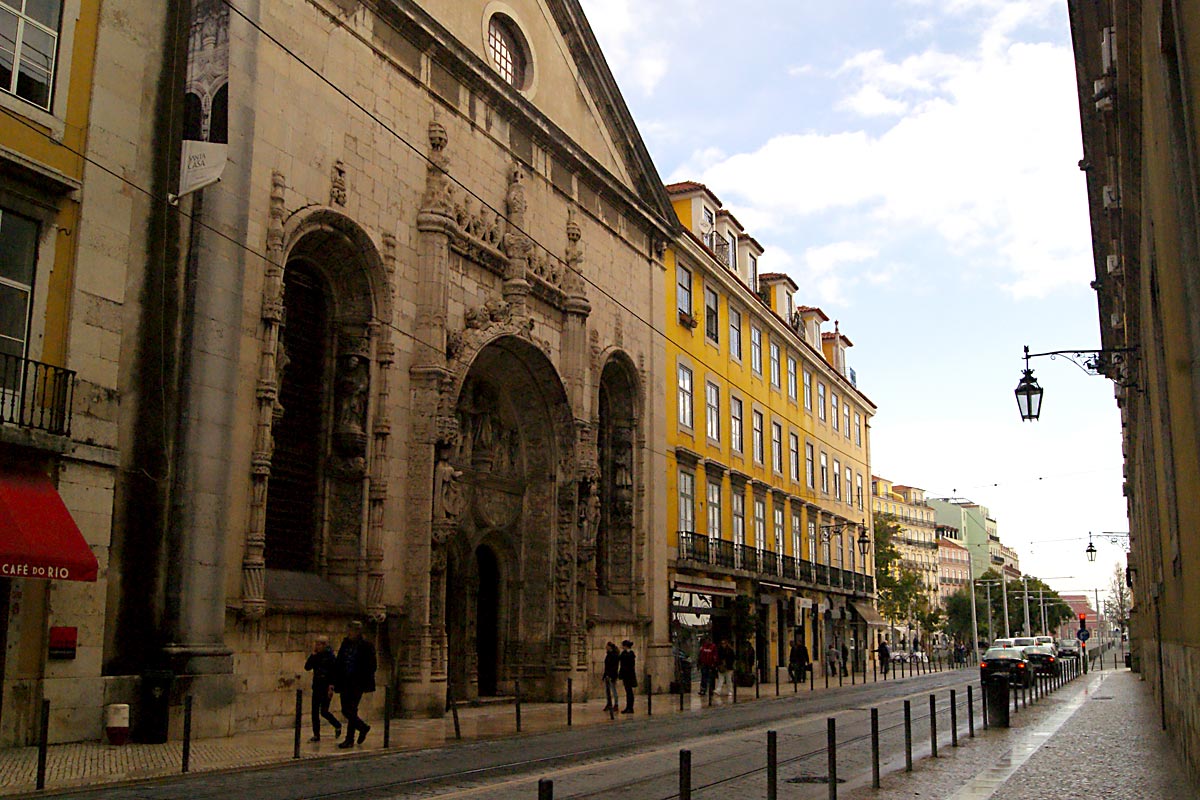
We start with a queen, Leonor (1458-1525), wife of King João II and sister of King Manuel I, a notable woman from that time. Contemporary of the golden period of expansion, she was considered the richest princess in Europe.
A figure who retained her status after being widowed, her legacy makes her one of the most influential Portuguese queens. In addition to sponsoring works of art, her role as a mentor of social and religious works was determinant in the establishment of the Misericórdia (Mercy) Institutions.
The Lisbon Holy House of Mercy was founded on 15 August 1498, an unprecedented project of Friar Miguel Contreiras and a social work institution of reference still operating today.
In a first moment, Queen Leonor founded the Brotherhood of Invocation to Our Lady of Mercy that occupied a chapel in the cloister of the Lisbon Cathedral, but soon this installation revealed to be insufficient and a new address was necessary.
For this reason, the Church of Misericórdia of Lisbon, today the Church of Conceição Velha, was erected and finished in 1534.
It was a large complex consisting of a church, a hospital, and
The monumental church of three naves with east/west orientation was about three times larger than the current one. The main gate that we see today


Simoa Godinha of São Tomé
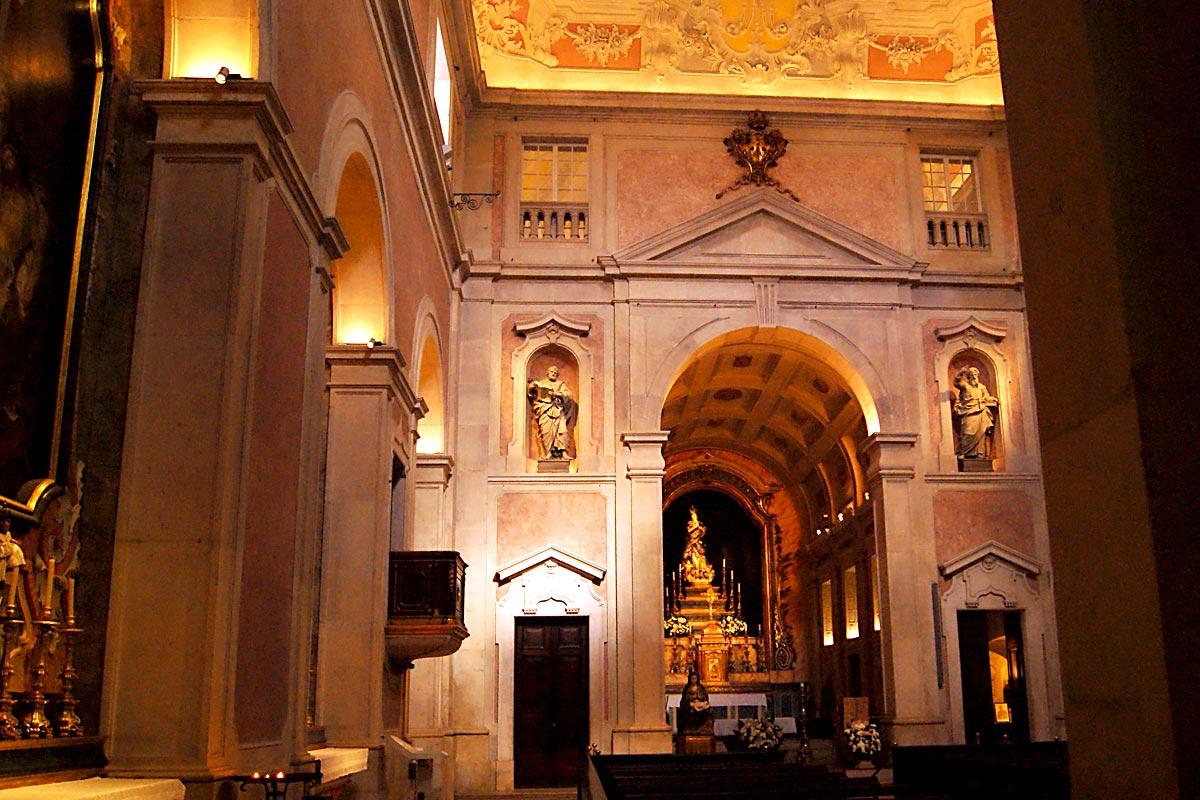
Simoa Godinha was a contradictory personality of Lisbon in the late 16th century. A black woman, but powerful, pious and rich, but at the expense of slavery work. The story of her life crossed with the one of the Church of Conceição Velha, at the time still Church of Misericórdia.
Daughter of Portuguese father and African mother, she was born in São Tomé in 1534 and inherited properties of production of sugar. She was married to Luís de Almeida, squire of the king who was also a great owner of farms in São Tomé.
In 1578 they moved out to Lisbon due to the social instability that created opposition between slaves and owners in the African colony. Business started being managed from here, certainly with great success given the opulence in which they lived and the wealth they accumulated.
The couple ordered built a chapel for their burial in the Church of Misericórdia. It is believed that the architect was Jerónimo de Ruão, the same as the one of the Church of Our Lady of Light due to the style similarity of simple but majestic lines.
When her husband passed away, around 1583, the chapel was already finished, for there he was buried as
With the earthquake of
Joana do Salitre, a Painter Woman

The third feminine figure is Joana do Salitre, a name still little-known to the general public. She is also notable, not for her financial power or meritorious character, but for the fact that she was one of the few painter women of the 18th century. Her contribution to the reconstruction of the Church of Conceição Velha consists of a beautiful representation of Our Lady of Purity that is in one of the lateral altars.
The simple altars that we
In a sustainable way, all the materials from the terrible catastrophe that could still be used were reused.
The use of artistic devices to simulate nobler materials that were not available was a constant, being the Trompe-l’oeil technique used often, an art that deceives the observer’s eye.
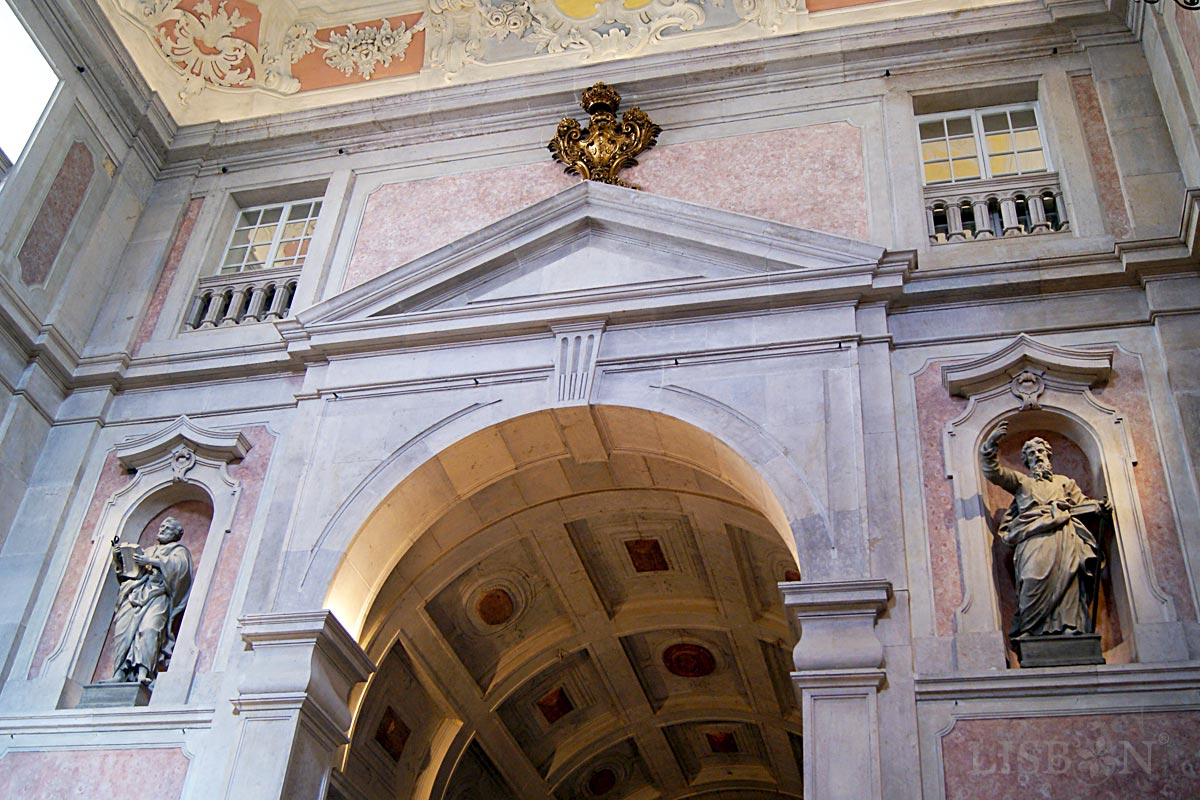
In the Church of Conceição Velha are present two truly surprising cases. The emblem of the Military Order of Christ of the time of King João V that is above the triumphal arch of the main chapel is sculpted in stone, but because it’s golden it makes us think it’s a wood work. It’s a piece that survived the catastrophe and that perhaps presented marks that were tried to disguise, thus giving it a new look and dignity.
On the other hand, the sculptures that we can see in niches that flank the same arch and that represent Saint Peter and Saint Paul, are carved in wood but painted to imitate marble. This fact reveals creativity in order to face the difficulties and willingness to meet the demanding standards of the times where there were more resources.
The Virgins of the Church of Conceição Velha
Continuing in the feminine perspective of this church, we will find out when and why the Church of Misericórdia became the Church of Conceição Velha.
Here the Virgin Mary is evoked in several of her titles and representations. It is through these representations that we find the answer to this and other matters.
Virgin of Mercy
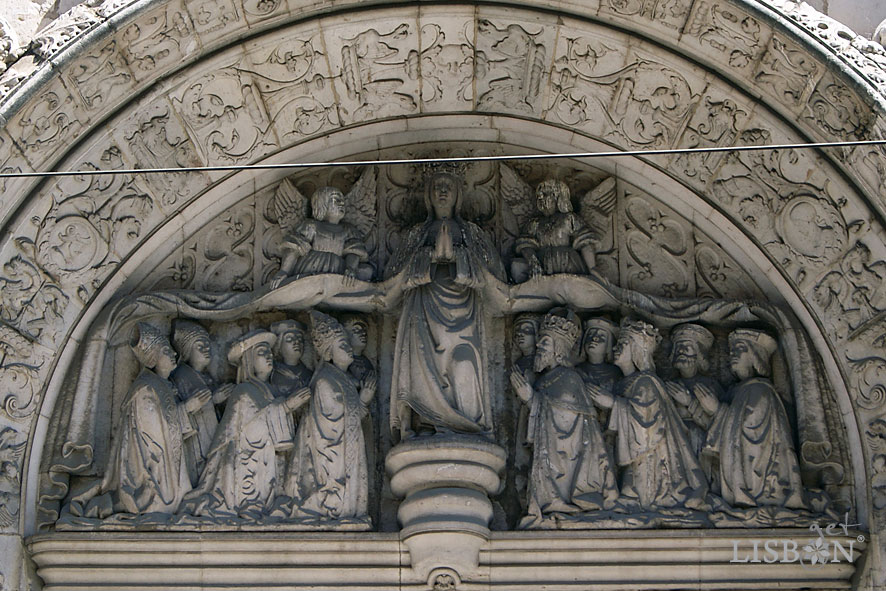
So let us focus first on the sculptural set of the tympanum of the church portal, late Gothic work of the first half of the
Our Lady of Belém
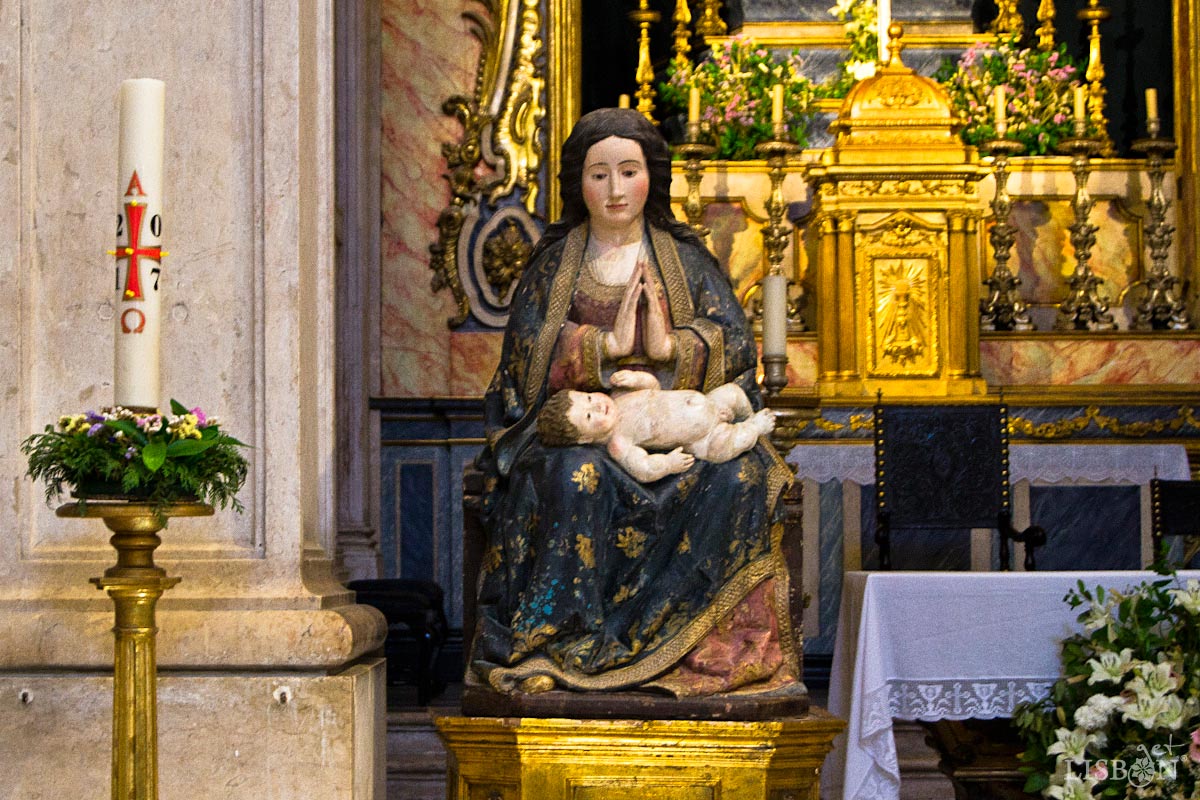
Inside the
In front of this
It is a piece of the 15th century commissioned to an Italian master by Prince Henrique. It belonged to the chapel of the Order of the Friars of Christ in Belém that was destroyed to give place to the grand project of King Manuel I, the Jerónimos Monastery.
At the time, around 1507, the
As we’ve seen, the Church of Misericórdia, current Church of Conceição Velha also collapsed, being urgent to find a new home for the Holy House of Mercy. Since São Roque,
The rebuilt Church of Misericórdia was then handed
Lady of Atalaia

A small image of the 17th century of the Lady of Atalaia or Lady of the Alfândegas also survived and found a home here after the destruction of the chapel of the Âlfandega Grande where it belonged to.
This adoration dates back to the early
| Never miss another article | Subscribe here |
Lady of Conception
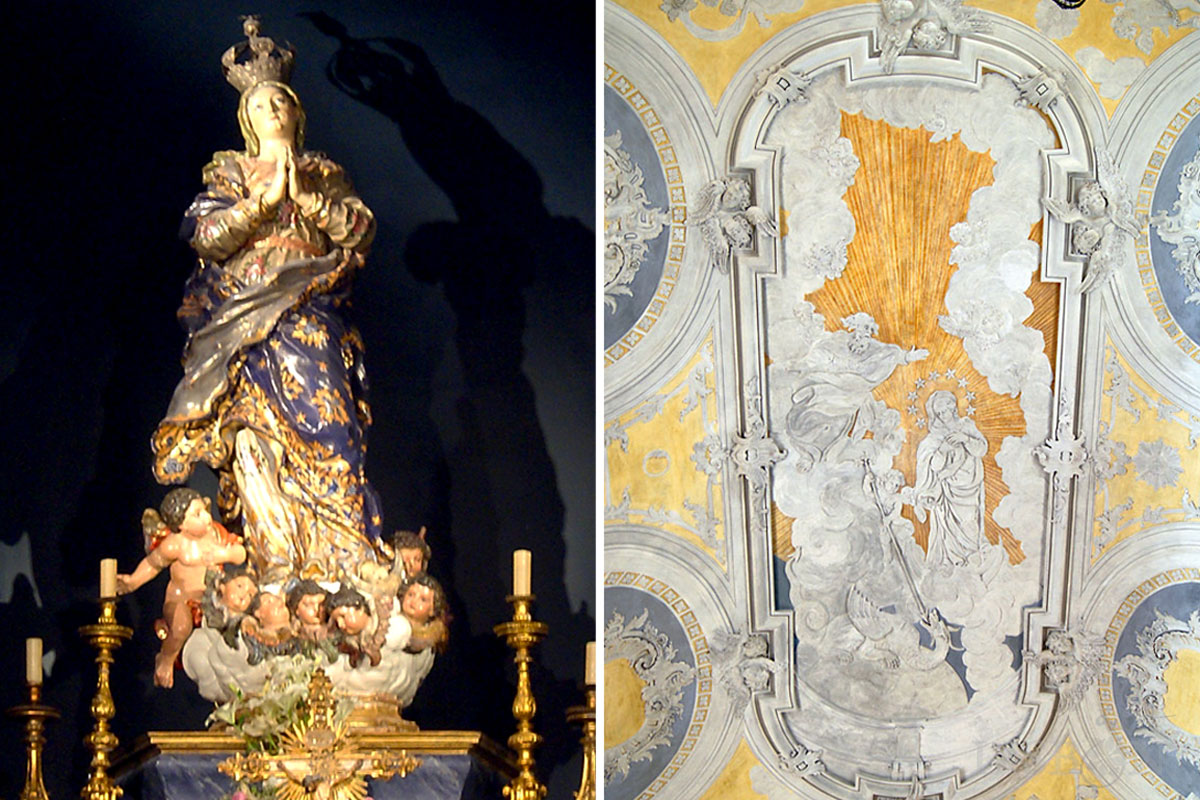
We must also refer the magnificent image of the Lady of Conception that is placed in the main altar and that was made in the late 18th century, purposely for this place. It is an image in upholstered, golden and painted wood with rocaille characteristics from the authorship of the sculptor José de Almeida, master of the famous Machado de Castro, author of the equestrian statue of King José.
Take a look also to the beautiful stucco work of the ceiling of the church by Félix da Rocha, artist born in Brazil and student of the Italian Giovanni Rossi that was responsible for the introduction of this art in Portugal. In the centre of this
Despite so many vicissitudes, occupations and constructions of diverse epochs we must highlight the harmony that exalts from the relationship of the several elements that constitute this Church of the Conceição Velha that deserves a visit.
The project getLISBON has been very rewarding and we want to continue revealing the singularities of fascinating Lisbon.
Help us keep this project alive!
By using these links to make your reservations you’ll be supporting us. With no extra costs!
• Looking for a different experience? We can create a customised itinerary based on your interests. Contact us!
• Or if you prefer tours and other activities in various destinations, take a look at GetYourGuide.
• Save time and money with a flexible Lisbon Card!




